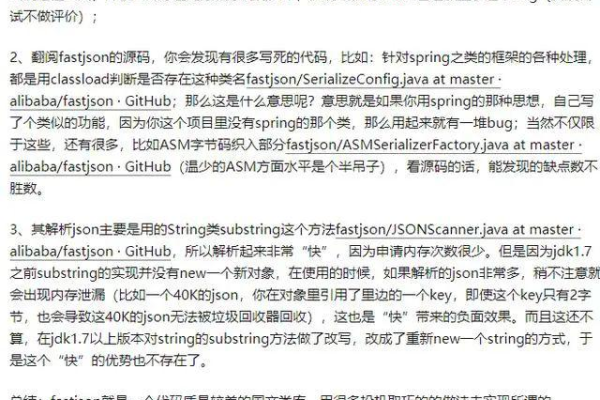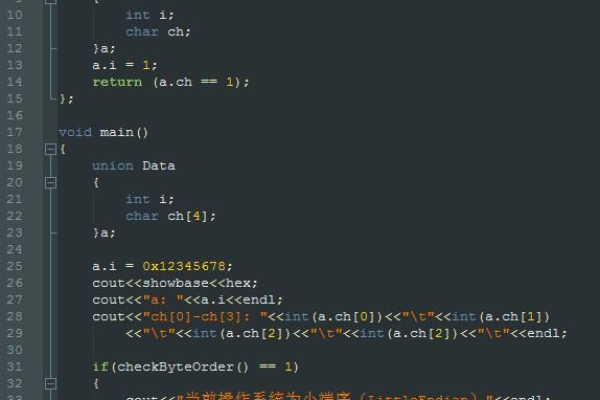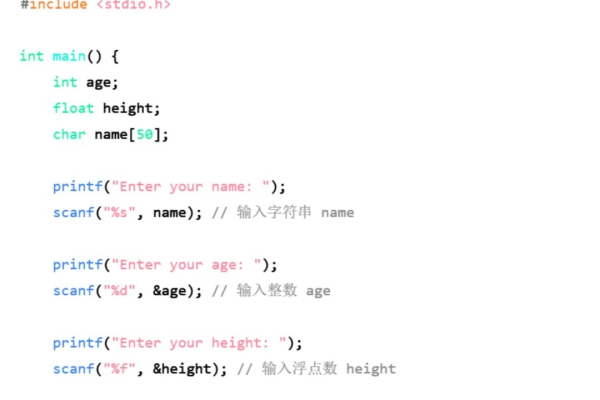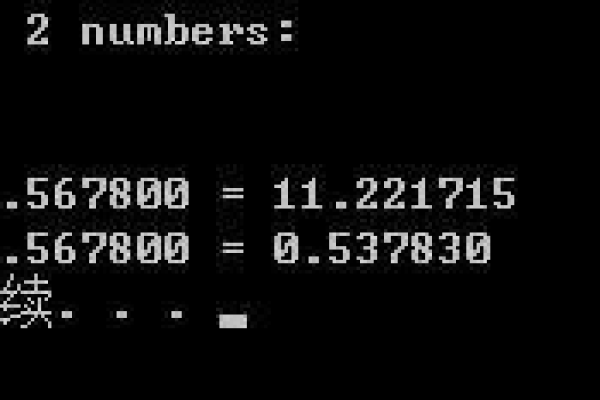c api 视频教程
- 行业动态
- 2025-02-16
- 3
C API 视频教程
FFmpeg 是一个强大的多媒体处理工具,其 C API 提供了丰富的功能来处理音视频数据,本文将介绍如何使用 FFmpeg 的 C API 进行基本的视频处理任务,包括初始化、解码、编码和封装。
一、环境准备
1、安装 FFmpeg:确保已经安装了 FFmpeg,并且可以在命令行中访问ffmpeg 命令。
2、设置开发环境:安装必要的编译器和构建工具,如 GCC 或 Visual Studio。
3、包含头文件:在代码中包含 FFmpeg 的头文件,例如libavcodec/avcodec.h、libavformat/avformat.h 等。
二、基本概念
AVFormatContext:用于处理输入输出格式的上下文。
AVCodecContext:编解码器的上下文,包含了编解码器相关的信息。
AVFrame:存储了一帧解码后的数据,也可以自行写入未编码的数据送入编码器进行编码。
AVPacket:存储了编码后的数据(除了研究码流编解码算法的同学应该没人会主动改里面的编码数据)。
三、示例代码
以下是一个简单的示例,展示了如何使用 FFmpeg 的 C API 进行视频解码和编码:
#include <libavcodec/avcodec.h>
#include <libavformat/avformat.h>
#include <libswscale/swscale.h>
int main(int argc, char *argv[]) {
// 注册所有编解码器
av_register_all();
// 打开输入文件
AVFormatContext *pFormatCtx = avformat_alloc_context();
if (avformat_open_input(&pFormatCtx, "input.mp4", NULL, NULL) != 0) {
printf("Couldn't open input file
");
return -1;
}
// 读取文件头信息,获取流信息
if (avformat_find_stream_info(pFormatCtx, NULL) < 0) {
printf("Couldn't find stream information
");
return -1;
}
// 查找视频流
int videoStreamIndex = -1;
for (unsigned int i = 0; i < pFormatCtx->nb_streams; i++) {
if (pFormatCtx->streams[i]->codecpar->codec_type == AVMEDIA_TYPE_VIDEO) {
videoStreamIndex = i;
break;
}
}
if (videoStreamIndex == -1) {
printf("Didn't find a video stream
");
return -1;
}
// 查找解码器
AVCodecParameters *codecpar = pFormatCtx->streams[videoStreamIndex]->codecpar;
AVCodec *dec = avcodec_find_decoder(codecpar->codec_id);
if (!dec) {
printf("Unsupported codec!
");
return -1;
}
// 打开解码器
AVCodecContext *dec_ctx = avcodec_alloc_context3(dec);
avcodec_parameters_to_context(dec_ctx, codecpar);
if (avcodec_open2(dec_ctx, dec, NULL) < 0) {
printf("Could not open codec
");
return -1;
}
// 读取帧并进行解码
AVFrame *frame = av_frame_alloc();
AVPacket packet;
while (av_read_frame(pFormatCtx, &packet) >= 0) {
if (packet.stream_index == videoStreamIndex) {
int ret = avcodec_send_packet(dec_ctx, &packet);
if (ret < 0) {
printf("Error sending a packet for decoding
");
return -1;
}
while (ret >= 0) {
ret = avcodec_receive_frame(dec_ctx, frame);
if (ret == AVERROR(EAGAIN) || ret == AVERROR_EOF) {
break;
} else if (ret < 0) {
printf("Error during decoding
");
return -1;
}
// 在这里可以对 frame 进行处理,例如显示或保存为图片
// ...
av_frame_unref(frame);
}
}
av_packet_unref(&packet);
}
// 释放资源
avcodec_free_context(&dec_ctx);
avformat_close_input(&pFormatCtx);
av_frame_free(&frame);
return 0;
}
四、常见问题及解答
1、如何选择合适的编解码器?
根据项目需求选择合适的编解码器,如果需要兼容性好且广泛支持的编解码器,可以选择 H.264 或 H.265,如果需要无损压缩,可以选择 FFV1。
使用avcodec_find_encoder_by_name 函数可以精确指定编解码器名称。
2、如何处理不同分辨率的视频?
使用avpicture_fill 或sws_scale 函数进行图像缩放和转换,确保目标分辨率与源分辨率匹配,或者根据需要进行缩放。
3、如何优化性能?
多线程处理:利用 FFmpeg 的多线程功能,通过设置thread_count 参数来提高处理速度。
硬件加速:检查是否有可用的硬件加速选项,如 GPU 加速。
内存管理:合理管理内存,避免内存泄漏和不必要的内存分配。
4、如何调试和日志记录?
使用av_log_set_level 函数设置日志级别,以便在开发过程中查看详细的调试信息。
使用断言和错误处理机制来捕捉和处理异常情况。
5、如何打包和发布应用程序?
确保所有依赖项都已正确安装,并使用适当的构建工具(如 CMake)来管理项目。
测试应用程序在不同平台上的兼容性,并根据需要进行相应的调整。
通过以上步骤和示例代码,您应该能够开始使用 FFmpeg 的 C API 进行基本的视频处理任务,如果您有更具体的问题或需要进一步的帮助,请随时提问!















